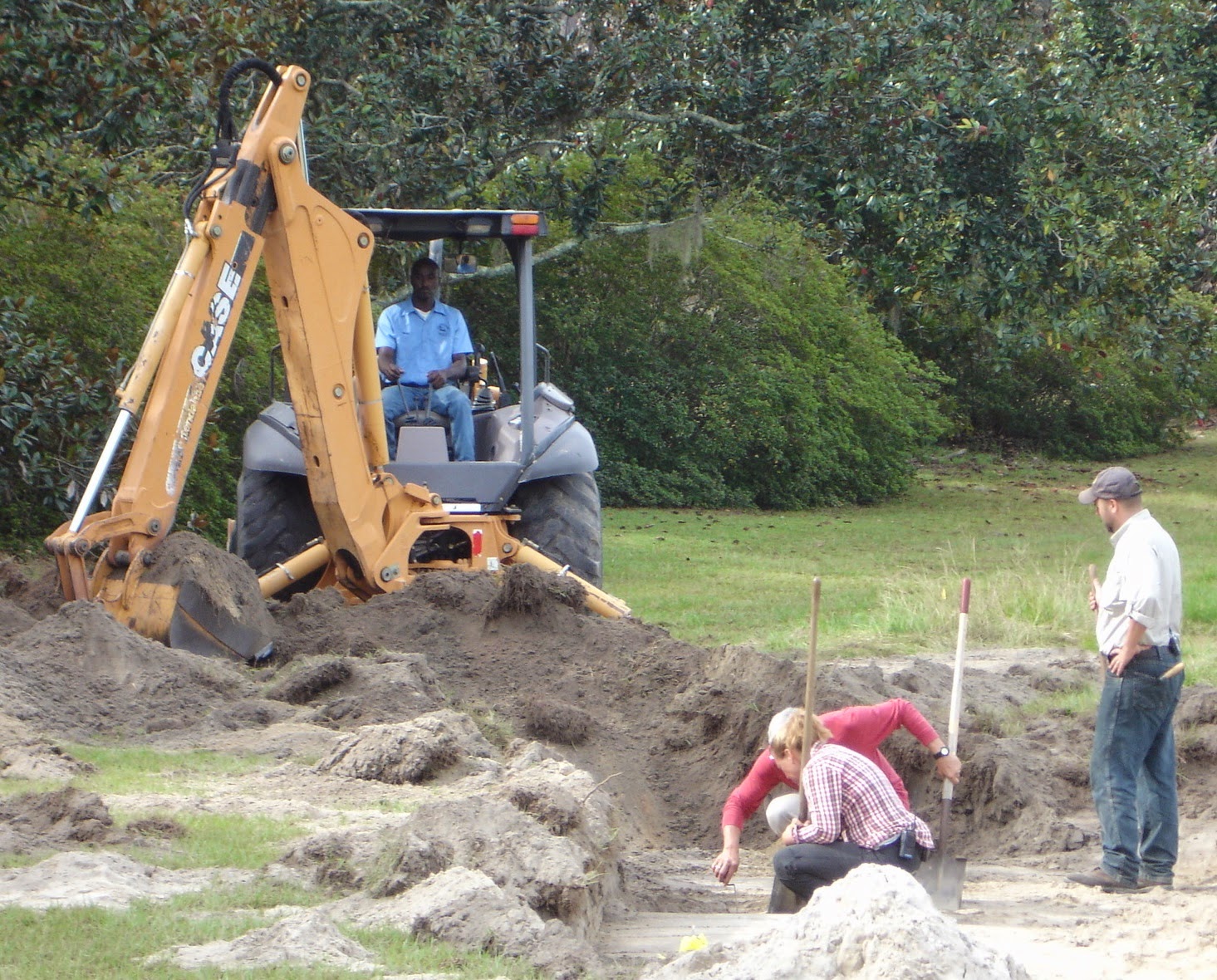 |
| Chelsea Rose with artifact (Ann McGarry, Oregon Public Broadcasting) |
PBS’ “Time Team America” wants viewers to feel like they are right alongside archaeologists bent over in trenches, dabbing sweat while digging for historical treasure.
Viewers
better be prepared to move quickly.
Tuesday night’s
one-hour episode on a Civil War prison in Georgia will adhere to the show’s
format of a “race against time” – 72 hours to unearth “secrets” and structures that
give context to what occurred at a site.
The
six-member team’s aim is to find the original site of Camp Lawton, which housed
10,000 Union prisoners near the small railroad town of Millen. At least 750 of
them died.
“What
artifacts are buried beneath the ground and what do they tell us of the hellish
experiences of the prisoners once held captive here?” a promotional release asks.
 |
| Archaeologists look for stockade wall evidence (Georgia Southern U,) |
The “Time
Team America” crew was on site for three days in October 2012, but the episode
is being broadcast only now because of a delay in season two of the series,
which also has a strong online audience.
To some
degree, the cat is largely out of the bag on what’s been confirmed at Camp
Lawton. While the Civil War Picket and other outlets have written about more
recent discoveries and research, most Americans likely know very little, if
anything, about the prison. And I saw several artifacts for the first time
while watching the episode.
The show’s quick pace,
of course, is not typical of most archaeological digs.
But the quest
for discovery, combined with solid storytelling and compelling characters, does
create drama as the team deals with successes, setbacks and a deadline.
 |
| "Time Team America" crew (Ann McGarry, Oregon Public Broadcasting) |
The “Time
Team America” team splits up to concentrate on certain aspects of the large,
42-acre site that straddles a Georgia state park and a former federal fish
hatchery.
Their goals:
To confirm the location of at least one stockade wall and a corner, excavate Confederate
guard and Union prisoner artifacts, and to find a powder magazine and the compound’s
front gate. They also want to determine the age of timbers found in a stream,
possibly associated with the stockade. One member even built a replica prisoner
shelter, or shebang, and spent the night on site.
Among the discoveries
is a Union soldier’s brass frame to hold a photograph.
“It was such
a profound artifact,” archaeologist Chelsea Rose says in one segment. “That picture frame could have been somebody’s
kids or wife. Someone they thought they may never see again … It would be hope,
it would be freedom, it would be everything that was sacred to you.”
 |
| Excavation in the prisoner area. (Ann McGarry, Oregon Public Broadcasting) |
The episode
includes animation of the wall and historical context about the prison, which
was built to relieve overcrowding at Andersonville prison. Camp Lawton was quickly
evacuated in late November 1864 when the March to the Sea from Atlanta to
Savannah would mean certain liberation.
Archaeology
students at Georgia Southern University in Statesboro for several years have
conducted digs on the site. The findings of one, Kevin Chapman, contributed to
further research and the 2010 announcement of significant finds at the site.
Lance
Greene, an assistant professor overseeing the work, said GSU since the filming has since done a
lot of work inside and outside the stockade. “In particular,
we have done more excavations on two prisoners' huts and on one of the brick
ovens inside the stockade.”
 |
| (Georgia Southern University) |
The Camp Lawton Facebook page on Sunday
said the school will soon begin updating its website with 3-D scans of artifacts.
“The
scans and other information will begin appearing on the website soon. This is
part of our effort to make information about Camp Lawton available to the
public, not only in the region, but around the world."
No comments:
Post a Comment